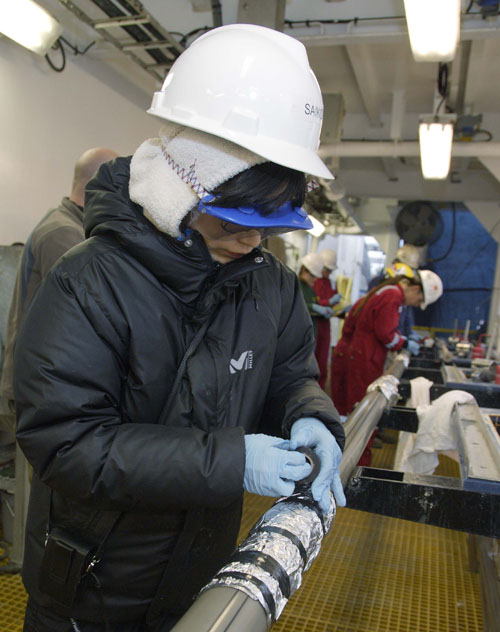Science News
Antarctic Past and Future
May 3, 2010

53 million years ago, Antarctica was warm and sub-tropical. Could this also be its future?
Scientists from all over the globe are studying ice core samples to learn from Antarctica’s past and are trying to predict its future.
In a joint mission called the Integrated Ocean Drilling Program or IODP, researchers are drilling and studying geological samples from the seafloor off the coast of Antarctica. “The new cores offer an unprecedented ability to decipher the history of glaciation in Antarctica,” says Jamie Allen, program director in the National Science Foundation (NSF)'s Division of Ocean Sciences, which co-funds IODP. “The climate record they preserve is immensely valuable, especially for testing how well current global climate models reproduce past history.”
Sediments and microfossils preserved within the cores document the onset of cooling and the development of the first Antarctic glaciers, as well as the growth and recession of Antarctica's ice sheets.
When Antarctica was warm those millions of years ago, atmospheric carbon dioxide levels were more than ten times higher than they are today. Then, in only 400,000 years—a mere blink of an eye in geologic time—concentrations of atmospheric carbon dioxide there decreased. Global temperatures dropped. Ice sheets developed. Antarctica became ice-bound.
Now, the giant ice sheets in Antarctica behave like mirrors, reflecting the sun's energy and moderating the world's temperatures. The waxing and waning of these ice sheets contribute to changes in sea level and affect ocean circulation, which regulates our climate by transporting heat around the planet.
“We can read these sediments like a history book,” says co-chief scientist Henk Brinkhuis of Utrecht University in the Netherlands. “And this book goes back 53 million years, giving us an unprecedented record of how ice sheets form and interact with changes in the climate and the ocean.
“Measurements of parameters such as age, temperature, and carbon dioxide concentration increase the accuracy of these models. The more we can constrain the models, the better they'll perform--and the better we can predict ice sheet behavior.”
Image: John Beck, IODP/TAMU